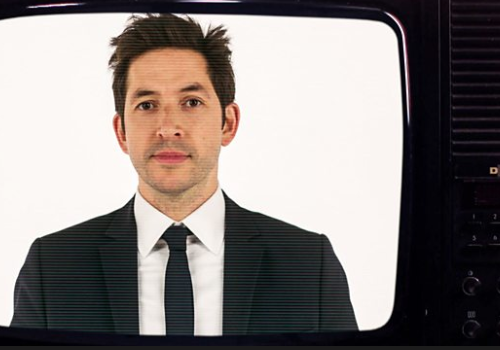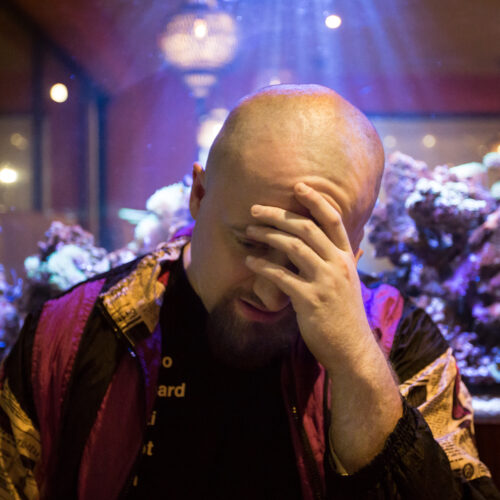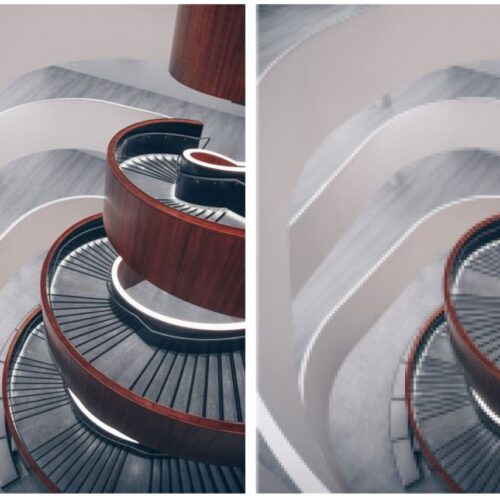
Age of the image
When I started tutoring at the OCA, I was keen to talk to more experienced tutors to find out how they broached complex ideas with mature students who might be returning to education and also engaging with contemporary art for the first time. I remember one tutor telling me that he sometimes wrote ‘as artists, we’re not decorating the world.’ It’s a good point – art and, by association, image making – does something more complex and profound It’s part of an ongoing shifting conversation about how the world is affected by, or reflected, in works of art.
It’s therefore important for all art students to explore and understand the potency of images. A good deal of that rests on understanding the way that image-making has changed and been changed, by whom, and to what purpose. It’s a complex subject with technology, psychology, politics, science, and artistic vision all playing their part.
In a new four part BBC series art historian Dr James Fox tracks a good deal of those changes with a wealth of examples from painting, film, theatre, photography, television and so on. After only two episodes, it’s clear that this series offers a great chance for students to learn about the issues that surround images and image-making in a stimulating and wide-reaching way.
In the second episode – Power Games – Fox starts his account with ‘all images are political, but some are more political than others’. Over the hour long programme he talks about how the Nazis deployed groundbreaking (and still influential) documentary techniques to promote their vile ideology while Marlene Dietrich was challenging gender stereotypes. He moves onto the way that comic books influenced American attitudes in the run up to them engaging in World War II (was Superman Jewish?). There’s even an early version of ‘photoshopping’ an image that ought to fascinate any journalist or photography student.
In summary, if you get the chance to catch this series (at the moment it only appears to be available to UK based BBC licence holders, but it may yet appear on other networks. I hope so, as it has a lot to say. It goes without saying that if you do watch this, it would make a great entry in your learning logs as ‘further research’.
|
|







thanks Bryan! a really good steer.
…and if you do watch and comment on your L Logs, don’t be afraid to make conections and observations of your own, even if you don’t feel at all qualified to do so. By which I mean that Fox’s opinions/script are simply that and not the only version, not ‘a truth’. You can make up your own minds on many things and – although this is a ‘history’, by an ‘art historian’ – this ‘history’ is only that person’s opinion (however well informed and researched) : there may well be other opinions out there with different conclusions about topics raised in the series. I, for example, was aghast that he credited the leap from still images to moving ones – a monumental step in vision(s), perception and the communication of (a) reality – to Edison. American historians would normally point to Muybridge [Muggeridge], because they adopt him as American (actually British). Personally I’d argue Etienne-Jules Marey contributed the most. In particular the first recreation of movement as we see it (which didn’t interest him as it showed nothing ‘new’ to this scientist). His assistant ‘stole’ that invention, to sell to the Lumiere brothers (the suppliers of their film). The point is, be brave and write your own opinions, don’t see this information (or any other) as prescribed; merely as a start for your own discoveries.
This is a very interesting series of programs. However I would disagree with his portrayal of how images came into being for mass audiences. He is forgetting the forerunner of cinema and animated images. Namely the mass media that was available in streets, theatres, which drew huge audiences, and shocked people. The history of which is greater and longer than photography and cinema. The Magic Lantern. I would suggest that anyone really interested in how the fascination of the image came into existence, look very carefully at this media. Magic Lanterns date back at least to the 17th century, and is still used today to wow and enthral audiences. In London the Royal Polytechnic Instution in 1838, had a theatre which seated 500 people, and regularly put on magic lantern shows. Please take a look at https://www.magiclanternsociety.org/ for further information.